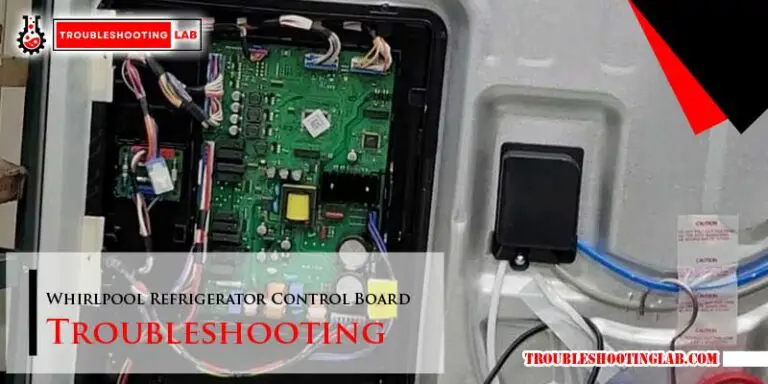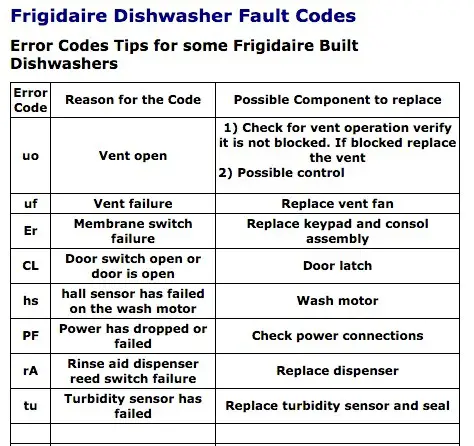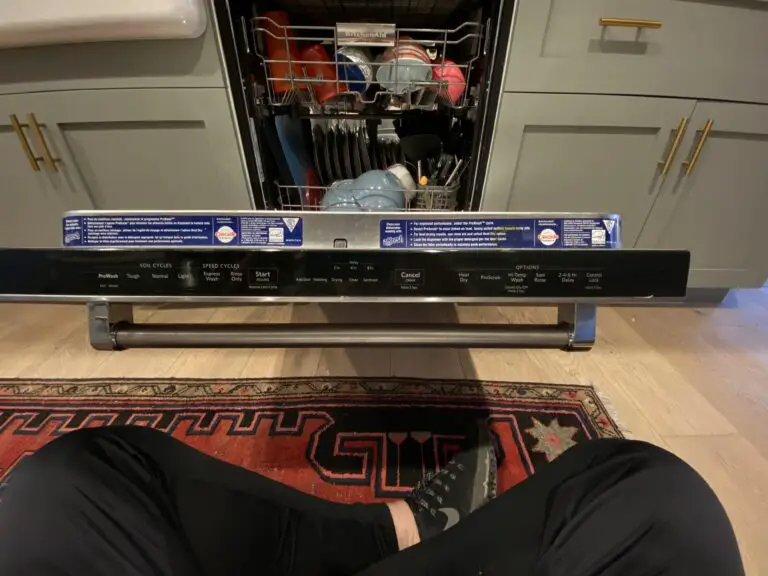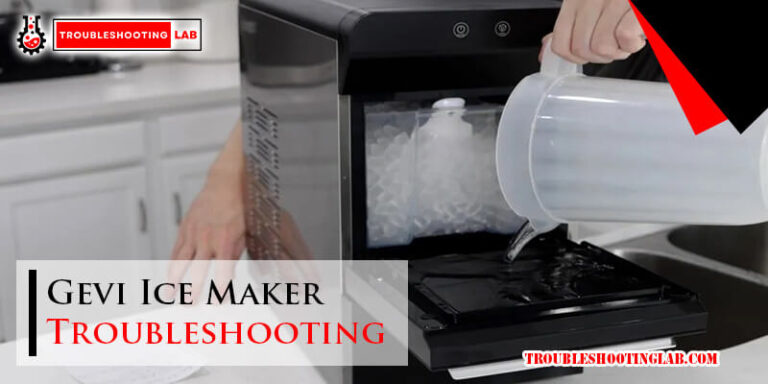Maytag Fridge Troubleshooting: Quick Fixes & Expert Tips
Is your Maytag fridge acting up? Whether it’s not cooling properly, making strange noises, or displaying error codes, dealing with refrigerator problems can be frustrating and stressful—especially when it’s the appliance you rely on to keep your food fresh.
The good news? You don’t have to feel stuck or overwhelmed. With a little guidance, many common Maytag fridge issues can be identified and fixed right at home. In this guide, we’ll walk you through simple troubleshooting steps to help you get your fridge back on track.
By the end of this article, you’ll feel more confident in understanding what’s wrong and what you can do about it. Don’t let a small hiccup disrupt your kitchen routine—keep reading to take control of your fridge troubles today!
Common Issues With Maytag Fridges
Maytag fridges are known for their reliability, but like any appliance, they can encounter problems over time. If your fridge is acting up, don’t panic—most issues are fairly common and can often be fixed without calling a professional. Let’s look at some of the most frequent challenges you might face and how to tackle them.
Fridge Not Cooling
A fridge that doesn’t cool properly can quickly ruin food and drinks. Start by checking the temperature settings; sometimes they can get bumped accidentally. If the settings are correct, inspect the vents and coils for dust or blockages—cleaning them might be all it takes to restore cooling.
Still not working? The issue could be with the condenser fan or compressor. These parts often require a technician, so don’t hesitate to seek professional help if needed.
Water Leaks
Water pooling around your fridge isn’t just annoying—it’s a sign of a problem. Check the defrost drain first, as it can get clogged with debris or ice. A simple flush with warm water can usually clear it.
If the drain isn’t the issue, inspect the water supply line for cracks or loose connections. Tightening connections or replacing the line can save you from future leaks.
Ice Maker Malfunctions
An ice maker that stops working can be frustrating, especially during hot days. Check if the ice maker is turned on—yes, it’s a simple step, but it’s easy to overlook. Also, confirm that the water supply is connected and flowing properly.
If the ice cubes are unusually small or misshapen, mineral buildup in the water line might be the culprit. Cleaning the line with a vinegar solution can improve performance.
Strange Noises
Hearing loud or unusual noises? This could indicate a problem with the compressor, fan, or motor. Listen carefully to pinpoint where the noise is coming from.
Sometimes, noise can result from something as simple as a loose part or an unbalanced fridge. Make sure the fridge is level and nothing is rattling inside or outside the appliance.
Door Seal Problems
A faulty door seal can cause your fridge to lose cool air, working harder and driving up energy bills. Run your hand along the edges to feel for leaks. If the seal is dirty, clean it with soap and water to improve its grip.
If cleaning doesn’t help, it might be time to replace the seal. Replacement kits are affordable and easy to install with basic tools.
Have you faced any of these issues before? Tackling them head-on can save you time, money, and stress. Always start with the basics, and don’t hesitate to call a technician if the problem persists.

Credit: www.youtube.com
Basic Troubleshooting Steps
Dealing with a Maytag fridge that’s not working as expected can be frustrating, but the good news is that many issues can be resolved with basic troubleshooting steps. Before calling a technician, try these simple checks to save time and money. You’ll be surprised how often these quick fixes work!
Checking Power Supply
Is your fridge not turning on? Start by verifying the power supply. Check if the fridge is properly plugged into the outlet. Sometimes, the cord might have been accidentally unplugged or loosened.
If the plug looks fine, test the outlet. Plug another appliance into the same socket to confirm it’s working. If the outlet isn’t functioning, reset the breaker or consult an electrician.
A simple check like this can save you from unnecessary panic.
Inspecting Temperature Settings
Is your fridge not cooling properly? Look at the temperature settings. They might have been accidentally changed during cleaning or while rearranging food.
The ideal fridge temperature is around 37°F (3°C). Adjust the dial or digital controls to bring the settings back to normal. Wait a few hours to see if the temperature stabilizes.
Sometimes, little tweaks can restore the cooling performance.
Cleaning Condenser Coils
Dirty condenser coils can cause cooling problems. These coils are located at the back or bottom of your fridge and tend to collect dust and debris over time.
Unplug the fridge and use a vacuum or coil brush to clean them thoroughly. Be gentle to avoid damaging the coils.
Cleaning them once every six months can prevent cooling issues and improve efficiency.
Testing The Door Seal
Check if the door seal is airtight. A loose or damaged seal can cause warm air to seep into the fridge, reducing its effectiveness.
Place a dollar bill halfway inside the door and close it. If you can easily pull the bill out, the seal might need replacing.
A faulty seal can be replaced with a new one from Maytag or your local appliance store.
Resetting The Fridge
If none of the above steps work, try resetting the fridge. Unplug it for 10-15 minutes, then plug it back in. This can help clear minor glitches in the control system.
For models with a reset button, consult your manual to locate it and follow the reset instructions.
Sometimes, a quick reset is all your fridge needs to get back on track.
Have you tried one of these steps and fixed your fridge? Share your experience in the comments below—it could help someone else troubleshoot their Maytag fridge!
Dealing With Cooling Problems
Is your Maytag fridge struggling to keep things cool? Don’t panic just yet. Cooling problems are common, and with the right steps, you can often fix them yourself without calling in a repair technician. Let’s look at some of the most common culprits and how to tackle them.
Thermostat Adjustments
Sometimes, the thermostat setting is the simplest fix. Double-check if it’s set to the right temperature. The fridge should be at or below 40°F (4°C), while the freezer should stay around 0°F (-18°C).
If the fridge still isn’t cooling, try turning the thermostat up or down slightly. Wait 24 hours to see if there’s an improvement. Be patient—small adjustments can make a big difference.
Blocked Air Vents
Have you packed your fridge to the brim with groceries? Overloading your fridge can block the air vents.
Take a moment to locate the vents, usually at the back or sides of the fridge. Ensure nothing is blocking them, like a box of leftovers or a bulky jug. Keeping these vents clear allows cold air to circulate freely, helping your fridge maintain the right temperature.
Malfunctioning Evaporator Fan
Can you hear a faint humming or whirring noise when your fridge is running? That’s the evaporator fan working to distribute cold air. If the fan is silent or making unusual noises, it might be malfunctioning.
Check the fan for visible obstructions like ice buildup or debris. If everything looks clear but the fan isn’t running, it may need to be replaced. While this might require professional help, identifying the issue early can save you time and money.
Compressor Troubles
Your fridge’s compressor is like its heart, pumping refrigerant to keep everything cool. If it’s not working properly, your fridge won’t cool effectively.
Listen for a faint hum from the back of the fridge—it’s a sign the compressor is running. If it’s dead silent or overheating, it could be a serious issue. In this case, contacting a professional technician is your best bet.
Is your fridge cooling problem resolved? If not, consider jotting down your troubleshooting steps before seeking expert help. Clear communication about what you’ve already tried can save time and avoid unnecessary repairs.
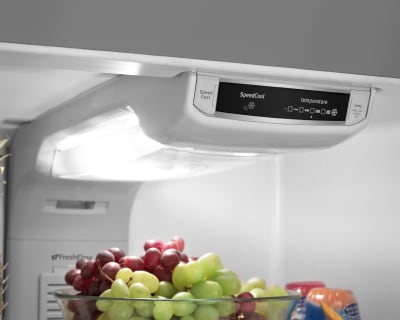
Credit: www.maytag.com
Fixing Ice Maker Issues
Ice makers are a convenient feature in Maytag refrigerators. They provide a steady supply of ice for daily use. But, like any appliance, they can experience issues. Fixing these problems is often simpler than you think. Below are common steps to troubleshoot your Maytag fridge’s ice maker.
Checking Water Supply Line
The ice maker needs a steady water flow to function. Check the water supply line for any kinks or damage. Ensure the line is securely connected to the fridge. Verify that the water valve is fully open. A restricted or disconnected line can stop the ice maker from working.
Clearing Ice Blockages
Ice blockages can disrupt the ice maker’s performance. Inspect the ice maker for any jammed or stuck ice. Use warm water to gently melt any frozen clumps. Avoid using sharp tools to dislodge ice, as this can damage the unit.
Resetting The Ice Maker
Sometimes, resetting the ice maker resolves minor glitches. Locate the reset button on the unit. Press and hold it for a few seconds until the machine restarts. Wait for the ice maker to resume its regular cycle. This simple step often fixes many common issues.
Replacing The Ice Maker Assembly
If the ice maker still doesn’t work, replacement may be needed. Order a compatible ice maker assembly for your Maytag model. Carefully follow the manufacturer’s instructions to install the new unit. This ensures proper functionality and avoids further damage.
Handling Water Leakage
Water leakage in your Maytag fridge can be frustrating and might even cause damage to your kitchen floor. Fortunately, most causes of leakage are easy to identify and fix. Let’s break it down step by step so you can handle the issue without needing professional help.
Inspecting The Drain Line
Your fridge’s drain line is responsible for directing excess water away. If it’s clogged or damaged, water may pool inside the fridge. Start by locating the drain hole, typically at the back of the fridge near the crisper drawers.
Shine a flashlight to check for visible blockages like food particles or ice buildup. If you spot something, use a soft wire or a pipe cleaner to gently clear the debris. Avoid poking too hard to prevent damage.
Have you ever noticed water pooling and wondered why? A clogged drain line is often the culprit. Clearing it can instantly resolve the leakage.
Cleaning The Defrost Drain
The defrost drain is another common source of leaks. Over time, ice or debris can block it, causing water to overflow into your fridge. Access the drain by removing the panel at the back of the freezer compartment.
Pour warm water into the drain hole using a turkey baster or a small funnel. This helps melt any ice blocking the pathway. If the blockage persists, try using a mixture of warm water and baking soda.
Do you clean your defrost drain regularly? If not, this simple maintenance task can prevent future leaks and keep your fridge running smoothly.
Checking The Water Filter
A poorly fitted or damaged water filter can also cause leaks. Locate your fridge’s water filter, usually inside the fridge compartment or near the bottom grille. Check if it’s seated properly in its housing.
If the filter is old or cracked, replace it with a compatible Maytag filter. Double-check the model number to ensure you get the right fit. Reinstall the new filter carefully to avoid leaks.
Have you replaced your filter recently? If not, this small step can improve water quality and eliminate leaks at the same time.
Inspecting The Water Inlet Valve
The water inlet valve controls the flow of water into your fridge. If it’s loose, cracked, or clogged, you might notice leakage. Locate the valve at the back of the fridge where the water line connects.
Turn off the water supply and inspect the valve closely. Tighten any loose connections using a wrench. If you spot damage, replace the valve entirely. This is a straightforward DIY task with basic tools.
Is your water inlet valve overdue for a check? Don’t wait for leaks to worsen—take action now to avoid bigger problems later.
Water leaks can seem like a big hassle, but with these quick troubleshooting steps, you’ll be back to enjoying your Maytag fridge in no time. Which step will you tackle first?
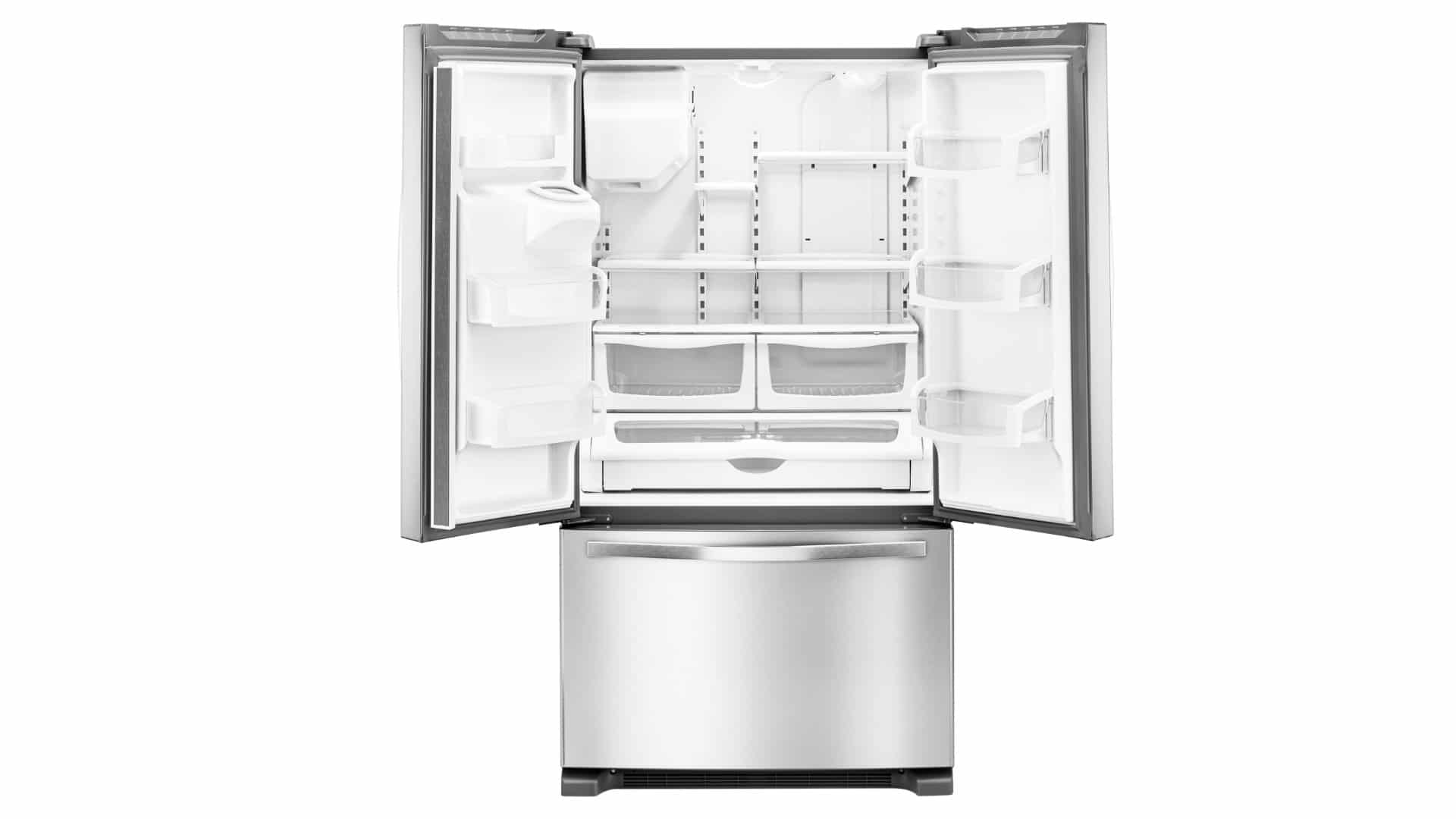
Credit: academy.fredsappliance.com
Reducing Unusual Noises
Unusual noises from your Maytag fridge can be distracting and even worrying. While some sounds are normal, like the hum of the compressor, others might signal an issue. Let’s walk through simple steps to identify and fix the source of these strange sounds.
Identifying The Noise Source
Start by listening carefully to pinpoint where the noise is coming from. Is it louder near the back, inside the freezer, or at the bottom? A rattling sound might mean loose parts, while a buzzing noise could indicate a faulty fan.
Pay attention to when the noise occurs. For example, does it happen during the cooling cycle or when the ice maker is running? Understanding the timing can help narrow down the culprit.
Adjusting The Fridge Level
An uneven fridge can cause vibrations and rattling noises. Check if your Maytag fridge is level by placing a spirit level on top of it. If it’s tilted, adjust the leveling legs at the bottom.
Turn the legs clockwise to lower the fridge or counterclockwise to raise it. This simple fix can often eliminate annoying vibrations.
Fixing Loose Components
Loose shelves, bins, or screws can create unnecessary noise. Open the fridge and gently wiggle the shelves and drawers to check for looseness. Tighten any screws or clips you find, and ensure all components are securely in place.
If the noise persists, inspect the back panel. Sometimes, it might need minor adjustments to stop vibrating against the fridge’s body.
Replacing Faulty Fans
If you hear a consistent buzzing or grinding sound, a faulty fan might be the issue. The evaporator fan, located in the freezer, or the condenser fan, found at the back, are common culprits. Unplug your fridge before inspecting these parts for damage.
Look for visible signs like a broken blade or dust buildup. If the fan motor seems damaged, consider replacing it with a compatible part. It’s a straightforward job if you’re comfortable with basic DIY tasks.
Tackling unusual noises isn’t just about peace and quiet—it’s about maintaining your fridge’s health. When you address these issues early, you prevent bigger problems down the line. So, why let a noisy fridge disrupt your day when you can fix it yourself with these steps?
When To Call A Professional
Maytag refrigerators are reliable, but even they can face issues over time. Some problems need professional help to ensure proper repairs. Knowing when to call an expert can save time and prevent further damage.
If you notice recurring problems or signs of major failure, contacting a technician is wise. Professionals have the tools and expertise to diagnose and fix complex issues. Attempting to fix these problems yourself can sometimes lead to more complications.
Signs Of Major Component Failure
Unusual noises, such as loud humming or clanking, may mean a failing compressor. Rapid temperature changes in the fridge or freezer can signal thermostat issues. A fridge that won’t turn on could point to electrical component problems. These signs often indicate issues requiring professional evaluation.
Refrigerant Leaks
Refrigerant leaks can cause cooling problems and affect food preservation. A sweet or chemical smell near the fridge may indicate a leak. Warm air inside your fridge, despite proper settings, is another potential sign. Handling refrigerants requires special equipment and training, so call a certified repair technician.
Persistent Issues After Diy Fixes
Sometimes, DIY fixes don’t resolve the root cause of a problem. If your fridge continues to malfunction after cleaning coils or adjusting settings, the issue may be deeper. Overlooking major repairs can worsen the problem, making professional help necessary.
Locating Reliable Repair Services
Research local appliance repair companies with a proven track record. Read customer reviews to understand their service quality. Check if the company specializes in Maytag refrigerators. Choose licensed technicians to ensure safe and effective repairs.
Preventive Maintenance Tips
Keeping your Maytag fridge in top shape doesn’t have to be a hassle. A little preventive maintenance can save you from costly repairs and extend the life of your appliance. Here are some straightforward, actionable tips to ensure your fridge runs smoothly year-round.
Regular Cleaning Schedule
Dust and grime can clog vents and coils, reducing efficiency. Make it a habit to clean the fridge’s exterior and interior at least once a month. Use a soft cloth and mild detergent to wipe spills inside and vacuum the coils at the back to prevent overheating.
Don’t forget the door seals! A clean seal ensures a tight fit, keeping cold air inside where it belongs.
Replacing Filters On Time
Water and air filters are easy to overlook but essential for a functioning fridge. Check your manual for the recommended replacement schedule—usually every 6 months. Neglecting filters can lead to clogged systems and unpleasant odors.
Set a reminder on your phone or calendar to ensure timely replacements. Fresh filters mean better water quality and cleaner air inside your fridge.
Monitoring Temperature Consistency
Is your fridge too warm or freezing your lettuce? Temperature inconsistency can spoil food and waste energy. Use a thermometer to check that the fridge stays between 37°F and 40°F and the freezer at 0°F.
If you notice frequent fluctuations, inspect the temperature dial or settings and adjust as needed. Sometimes, it’s as simple as moving items away from vents to allow proper airflow.
Inspecting For Wear And Tear
Small issues like loose hinges or cracked shelves can turn into bigger problems if ignored. Make it a habit to inspect your fridge every couple of months for signs of wear. Tighten loose screws or replace damaged parts promptly.
Pay attention to unusual noises—these can be early warning signs of mechanical issues. Addressing them early can save you from hefty repair bills down the line.
Which of these tips are you already doing? Regular care can make a huge difference. Your Maytag fridge deserves the attention—it’s working hard for you every day!
Conclusion
Troubleshooting your Maytag fridge doesn’t have to feel overwhelming. Start small. Check basic issues like power, temperature settings, or door seals. Many problems can be fixed without professional help. For complex issues, consult the user manual or contact a technician.
Regular maintenance can prevent most common problems. Keep the fridge clean and ensure proper airflow. A well-maintained fridge lasts longer and works efficiently. Use these tips to keep your appliance in top shape. Small steps today can save you from bigger issues tomorrow.
Always stay proactive with care and repairs. A little effort goes a long way.

